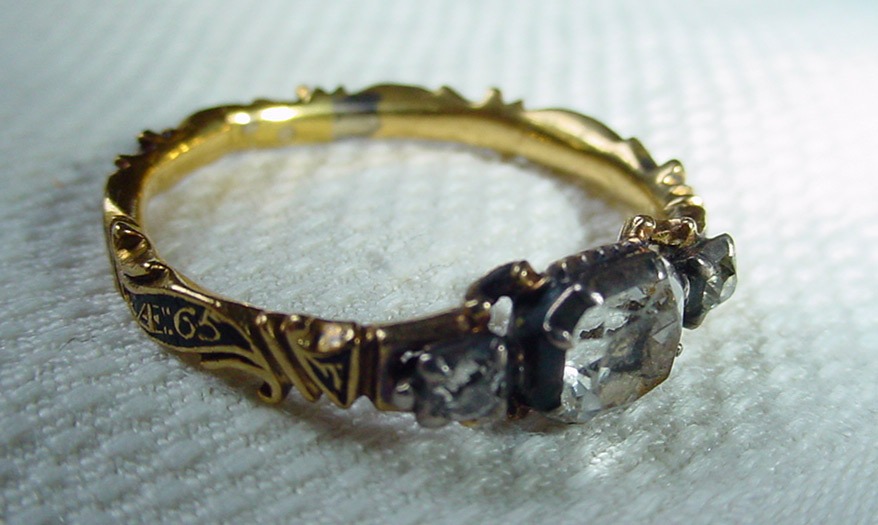Mourning rings are special and uniquely created accessories which commemorate a loved ones death including a friend or a prominent figure in your life. The prelude of this fashion trend dates back during the supremacy of the Roman Empire. During the ancient days, the Carthaginian general had ordered that golden rings must be taken from the killed Romans who had been deployed to Carthage. Golden rings were only worn by the elite in their kind of society. In loving memory of the affluent Romans, those rings were replaced by iron to signify the general days of mourning. Moreover, these were significantly identified beginning from the 15th century until the early days of the 20th century.

The Medieval Period, mourning rings become customary in some societies to lovingly remember a departed loved one. This is characterized by a simple half-hoop ring which contained the initials of a dead relative or friend. Over the years, another salient feature was added like a triangular-cross section to the ever glamorous ornaments. Furthermore, a ring with a lozenge hexagonal bezel wherein the most cherished initials of the deceased were enameled. To make it more a priceless, meaningful motto was intricately embellished. These were given to the closest friends of the faithful departed as stated in the last will of the deceased. For instance, the famous William Shakespeare left a will which said that he left a sum of money to his dearest friends to buy their splendid gold rings.

This very consoling tradition had lasted until the 19th century. However, there was also another form of traditions in bequeathing these regal mourning rings up to 200 pieces. Doctors and other popular personalities were also inclusive in the last will during the 18th century. Styles of these rings in general were merely described as follows:
- 16th century:
Plain half rounded hoops engraved with the initials of the deceased and date of parting
- 17th century:
Hoops, half rounded hoops or hoops with a triangular cross-section with a lozenge or hexagonal bezel. Enameled or engraved with mottos and/or vanitas symbols.
- 1660-1720:
Enameled simple -half rounded – hoops with cut out skulls between foliage designs.
- 1734-1747:
Hoops (half rounded) completely cut out with vanitas symbols as a skeleton, hourglass, shovel, and spade and crossed bones on a ground of black or white enamel (image on the left).12
- 1730-1815:
Plain hoops with the name and date of death on a ground of black or white enamel. Also plain hoops with bezels, set with gemstones.
In the earlier part of the period; coffin-shaped bezels enclosing a skeleton under a clear crystal cover.
In the latter part; oval bezels with a golden monogram of the deceased on a ground of hair, urns and other vanitas symbols crafted from hair.
- 1735-1775:
From about 1735, elegant wavy hoops or scrolls, enameled and with the names of the deceased. Also, bezels set with gemstones or skeletons under a clear crystal cover.
- 1775-1800:
Marquise-shaped bezels came into fashion.
- 19th century:
Plain hoops were still the norm but also gypsy ring types with portraits on ivory, hair backgrounds or gemset (diamonds).

Truly, mourning rings are more than just fashionable ornaments that you can proudly wear without hesitations.




